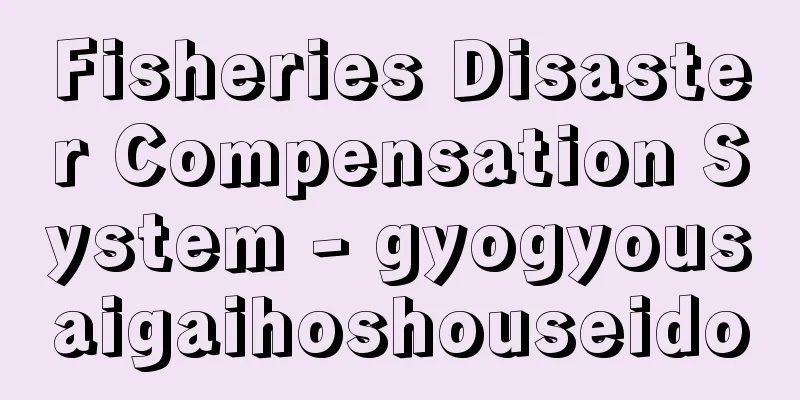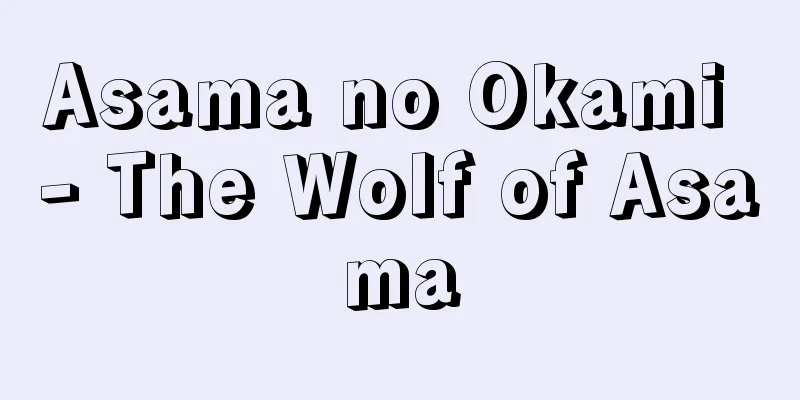Edomae - Edomae

|
The word has been used widely and its meaning varies from era to era. It has been used since the mid-Edo period, but its use to refer to eels is older than its use as a specific name for fish and shellfish in the sea of Edo, and even in the late Edo period, the emphasis was generally on that. The Furyu Shidokenden, published during the Horeki era (1751-64), features the phrase "Enri Edomae Okabayaki." Also, at the end of the Edo period, Nishizawa Ippo, a Kyoto writer and playwright, came to Edo and was talking to people from Edo when he mentioned the word Edomae. Ippo, who was from the Kansai region, was not sure of the location, so when he asked about it, he was told that Edomae meant west of the Okawa River and east of the castle. This was the area stretching from present-day Tsukiji to Teppozu, and the eels caught there were called Edomae. At the time, there were many grilled eel restaurants in the area around present-day Ginza 4-Chome, likely because the eel fishing grounds were nearby. Famous grilled eel restaurants shown in Edo period nishikie prints simply have "Edomae" written on their lanterns and signs, but more general restaurants have the title Edomae and are labeled as large kabayaki. In short, even at the end of the Edo period, it appears that Edomae was still used heavily to refer to eel. Also, in "Hiyokushu" published in 1801 (Kyowa 1), there is the phrase "We have flounder and black porgy" and "That must be Edomae", and so the fish and shellfish from the sea around Shibaura and Shinagawa in Edo were sometimes referred to as Edomae. At the time, the meaning of the word Edomae included good taste, but it also had a strong meaning of good freshness, and eels brought from around Soka in Saitama Prefecture were called "traveling eels" in comparison to Edomae eels. The word Edomae was not used much after the Meiji period, but in the middle of the Taisho period, sushi restaurants started using it to mean fish from the sea near Tokyo, and it has been used again since. The sea area it describes is a relatively wide area, with Tokyo at the center. [Tetsunosuke Tada] A grilled eel shop. The third scroll (part) of "Shokunin-zukushi Ekotoba" (Illustrated Tales of Artisans). The original is by Kuwagata Keisai (Masami Kitao), with a legend by Tegara Okamochi (Kizo Hoseido). Owned by the National Diet Library . Grilled eel restaurant Source: Shogakukan Encyclopedia Nipponica About Encyclopedia Nipponica Information | Legend |
|
このことばの使い方は広く、時代により内容も異なる。江戸中期から使われていることばであるが、江戸の海の魚貝類に対しての特称としての用い方よりは、ウナギに対して用いたほうが古く、また江戸後期でもだいたいそのほうに重点があった。宝暦(ほうれき)年間(1751~64)に出された『風流志道軒伝(しどうけんでん)』には、「厭離(えんり)江戸前大樺焼(おおかばやき)」ということばが出ている。また江戸末期に、京都の文人であり、芝居の狂言作者でもある西沢一鳳(いっぽう)が、江戸にきて、江戸の人と話をしていたおり、江戸前ということばが出た。関西人の一鳳にはその場所が明らかでないので問いただすと、江戸前とは大川の西、お城の東という説明をされたという。いまの築地(つきじ)から鉄砲洲(てっぽうず)にかけての地区であり、そこでとれたウナギを江戸前といっていたのである。当時ウナギの蒲焼(かばや)き屋が現在の銀座4丁目付近に多かったのは、ウナギの漁場が近かったためであろう。江戸時代の錦絵(にしきえ)に出ている蒲焼き屋の有名店には、行灯(あんどん)や看板に単に「江戸前」としか書いてないが、一般店は江戸前と肩書きし、大蒲焼きと書いてある。要するに江戸時代末のころでも、江戸前とはウナギの意としての用い方に比重が大きくかかっていたとみられる。 また1801年(享和1)に刊行された『比翼衆』には「かれいとくろだいがござります」「そりゃ江戸前だろう」ということばが出てくるように、芝浦、品川あたりの江戸の海の魚貝類を江戸前といったこともある。なお、当時江戸前のことばの意味は、味のいい意も含むが、鮮度のいい意も多く含まれ、江戸前のウナギに対して、埼玉県草加(そうか)あたりから持ってくるものを「旅の物」と称していた。江戸前のことばは明治以降あまり用いられなくなったが、大正の中ごろすし屋が東京近海の魚を用いている意で使い始め、ふたたび使われてきた。その表現する海域は、東京中心に、比較的広い範囲の意になっている。 [多田鉄之助] 蒲焼屋。『職人尽絵詞』 第3軸(部分) 原図は、鍬形蕙斎(北尾政美)画、手柄岡持(朋誠堂喜三二)詞書国立国会図書館所蔵"> 蒲焼き屋 出典 小学館 日本大百科全書(ニッポニカ)日本大百科全書(ニッポニカ)について 情報 | 凡例 |
<<: The Sixty Chapters of Edo Masago
Recommend
Blastophaga psenes (English spelling)
…The latex secreted from the cut ends of the bran...
Geiger, A.
...His successors found ideological agreement wit...
Dressing table - Siblings
A stand for hanging a mirror, or a mirror stand. ...
Korobokgur (English spelling)
They are also called Koropokkuru. They are a small...
Musk gland - Musk
A gland that secretes musk in the musk deer or civ...
Afars et Issas (English spelling) AfarsetIssas
…Official name = Republic of DjiboutiJumhūrīya al...
Antoine-Hippolyte Pixii
1808‐35 French maker of physical machines and inst...
Elaphe obsoleta (English spelling)
… [Takahiro Matsui]. … *Some of the terminology e...
Kamuikotan Station - Kamuikotan Station
...The name of the area originates from the Ainu ...
Flower mirror - Kakyo
Zeami's theory of Noh. It was passed down to ...
Kazuho Yoshida - Yoshida Issui
Poet. Born in Kamiiso-gun, Hokkaido. His real nam...
Janssen, Z. (English spelling) JanssenZ
…An optical microscope uses an objective lens to ...
One-line bear
〘Noun〙 A type of dark circles on the face of an ac...
Arran sweater
A hand-knitted sweater with a rugged pattern that ...
Willem de Sitter
1872‐1934 Also known as de Sitter, he was a Dutch ...

![Kii-Nagashima [town] - Kii-Nagashima](/upload/images/67cb4e00aed74.webp)






![Jumonji [town] - Jumonji](/upload/images/67cbd463b5547.webp)
